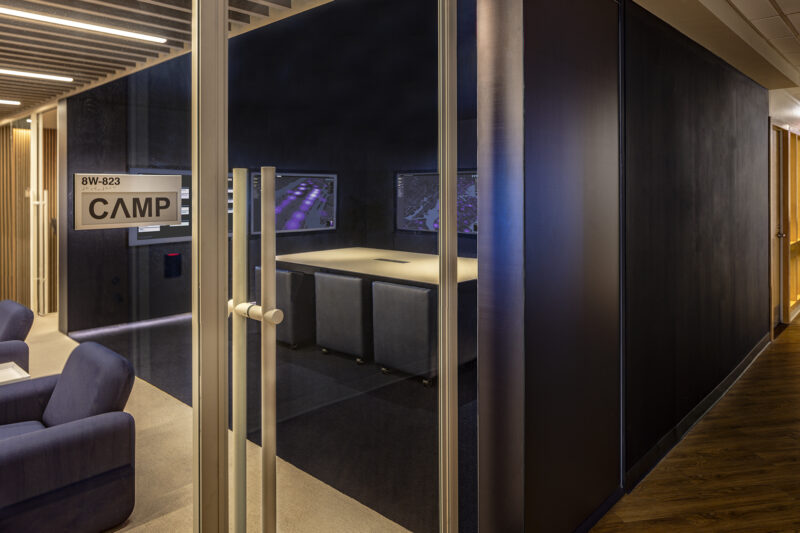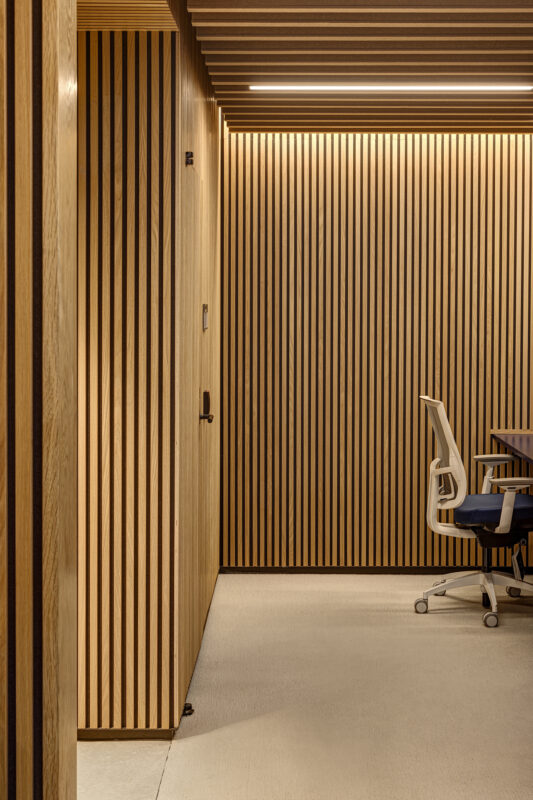CAMP at HSS
CategoryOfficesYear2023
LocationNew York, NY
Size1,500 S.F.
Collaborator Two-N (GUI Design)
Widely recognized as the premier orthopedics hospital in the world, the Hospital for Special Surgery (HSS) had been slowly and methodically building a data analytics and performance modeling group for years. The primary directive for this group, called Center for Analytics, Modeling and Performance (CAMP), is to collect, interpret, and utilize reams of complex and disparate hospital-generated data to improve patient experience and success rates, and maximize overall hospital performance. The success of this emerging and relatively hidden department eventually led to the decision to create a space fully dedicated to their expertise, a space where anyone within the hospital can engage directly with the CAMP team.
The CAMP team connected with Mapos because of our deep experience integrating technology with thoughtful design, and our human-centered design approach. Their directive to us was to create a space that is a counterpoint to the typical sterile hospital environment: a place that has texture and warmth, and is as thoughtful about designing space for humans as the CAMP team is about designing data for humans. Foremost in the success matrix for the project was creating a place that was inviting and welcoming to anyone within the hospital.
To this end, the centerpiece of the space is the engagement lounge, a furniture arrangement designed to be the initial point of casual contact between the CAMP team and the hospital staff. This is where hospital staff may have their first sit-down with the CAMP team to describe their challenges and collectively determine how the CAMP can help them by leveraging hospital data. From this first point of engagement, one can enter the Data 360 room to the right or one of the studio niches to the left, depending on how one wants to interact with the CAMP team and the technology in the space.
Expressed as a midnight blue cube, the Data 360 room is the star of the show. It was conceived as a data-drenched meeting room where every graphic user interface (GUI) concept is tested in real space on interactive touchscreens. The room is anchored around a custom floating table with nesting chairs and surrounded by five large-format touch screens. It is in this space that the architecture disappears and the data design, developed by the award-winning GUI design firm Two-N, comes to the fore, and can be tested in real time. This space not only serves as a presentation and prototyping space, but as a kind of showroom for all the capabilities of the CAMP team.
On the other side of the space resides the studios. These are niches where one can workshop with the CAMP team members. Work can be done at a booth or a high worktable with a projection surface / whiteboard. A kitchenette and IT closet are also hidden along this wall. Centered in the back of the space, behind a floating whiteboard, are hot-desk workstations where various travelling members of the CAMP team can plug in and work for the day.
The various meetings and operations of the space are open to one other by design, to encourage collaboration. For this reason, acoustics were a key consideration for the design. Felt ceiling baffles over the center space prevent conversations from travelling while visually masking the cacophony of ceiling components needed in the space. The alternating bands of felt and wood wrap every wall of the space and is the dominant visual texture, which baffles and softens conversation. This wall system is unique to the space, and along with the feeling of openness and warmth, signals to staff and guests that this is a new kind of space within the hospital. It is a space that beckons and invites inquiry, and signals the future of healthcare, much like the mission of the CAMP team itself.
Photography by Michael Biondo.
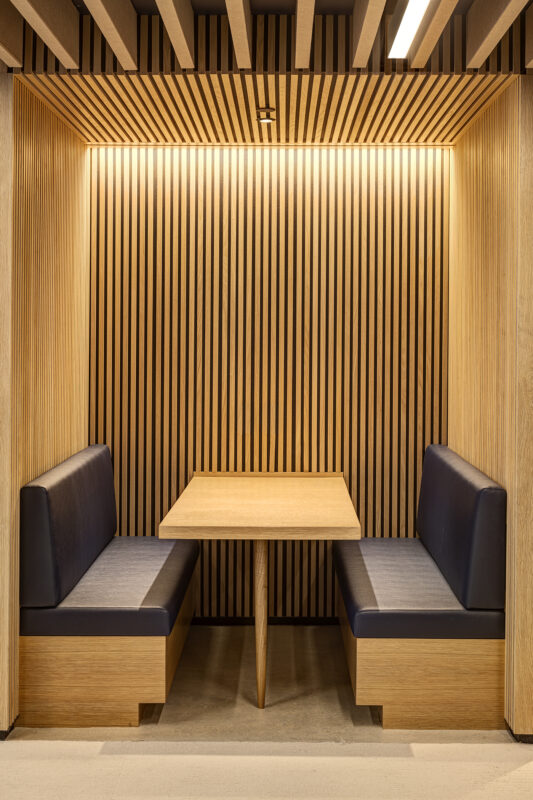
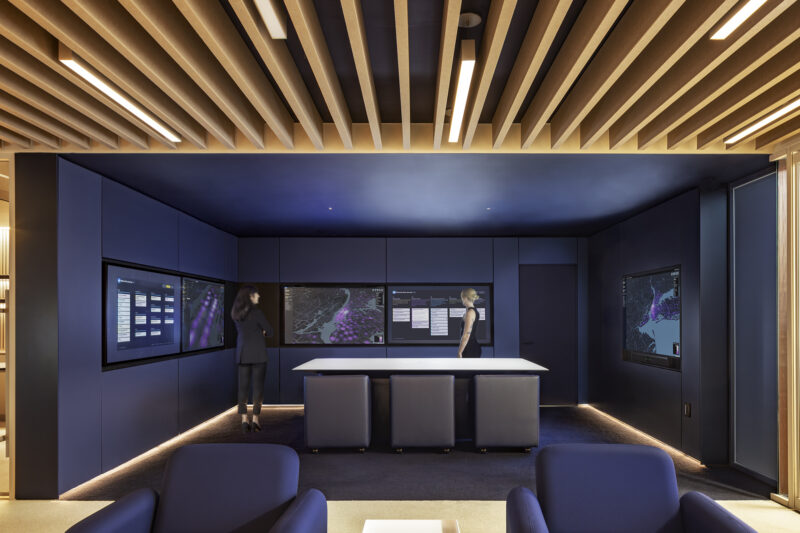
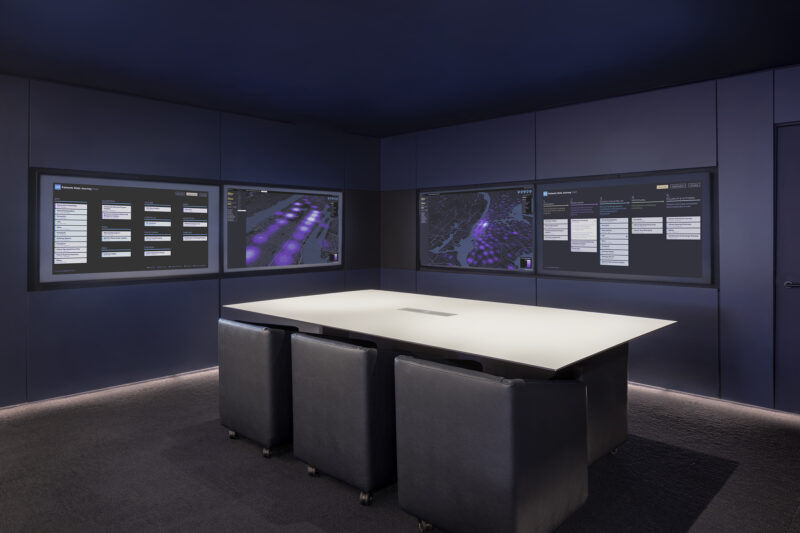
Expressed as a midnight blue cube, the Data 360 room is the star of the show. It was conceived as a data-drenched meeting room where every graphic user interface (GUI) concept is tested in real space on interactive touchscreens.
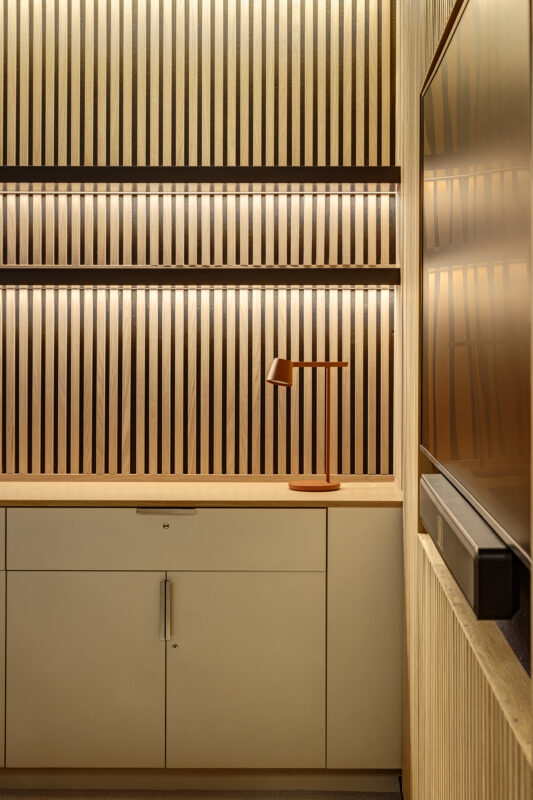
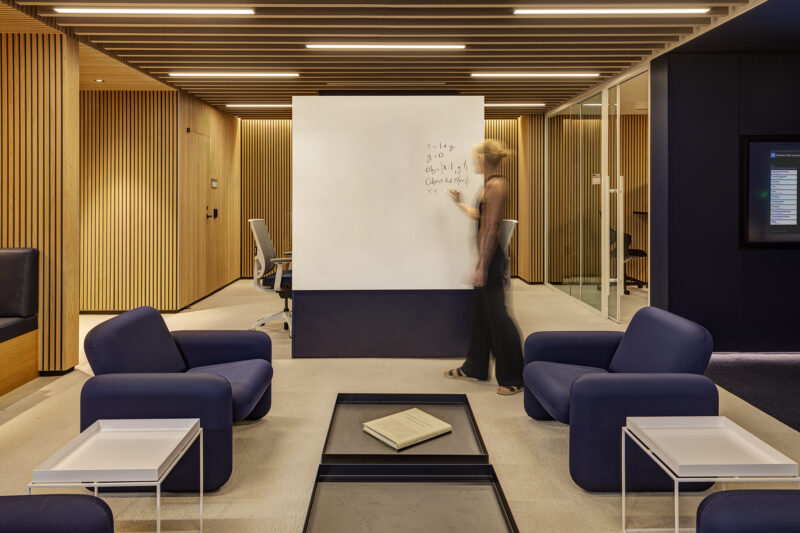
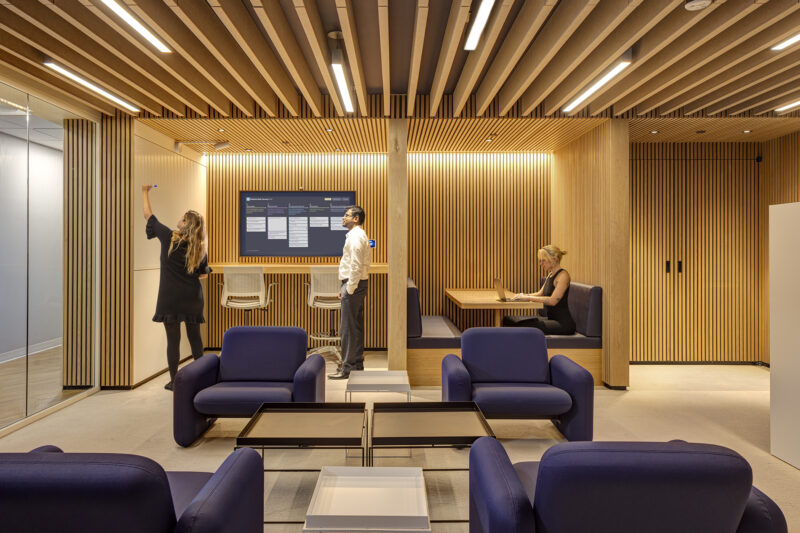
Their directive to us was to create a space that is a counterpoint to the typical sterile hospital environment: a place that has texture and warmth, and is as thoughtful about designing space for humans as the CAMP team is about designing data for humans.
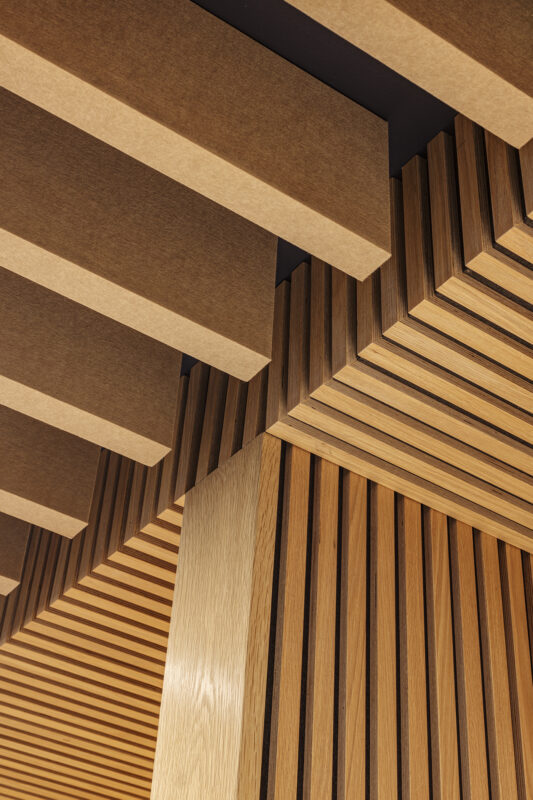
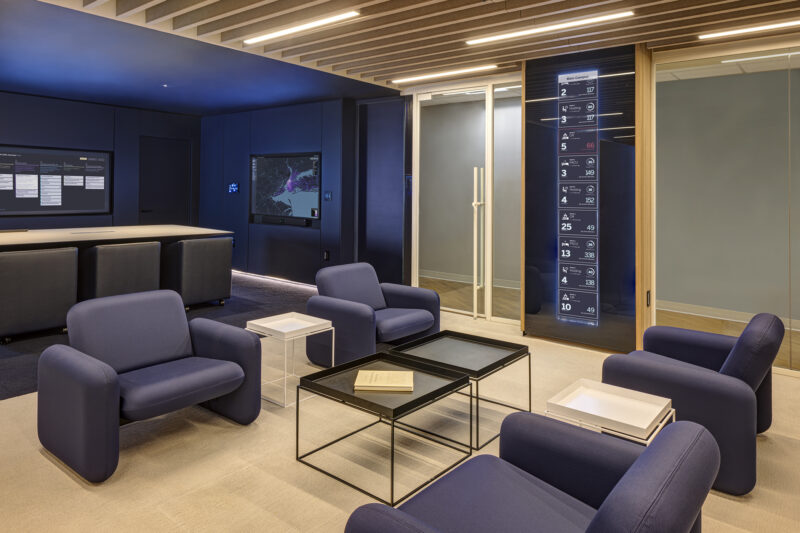
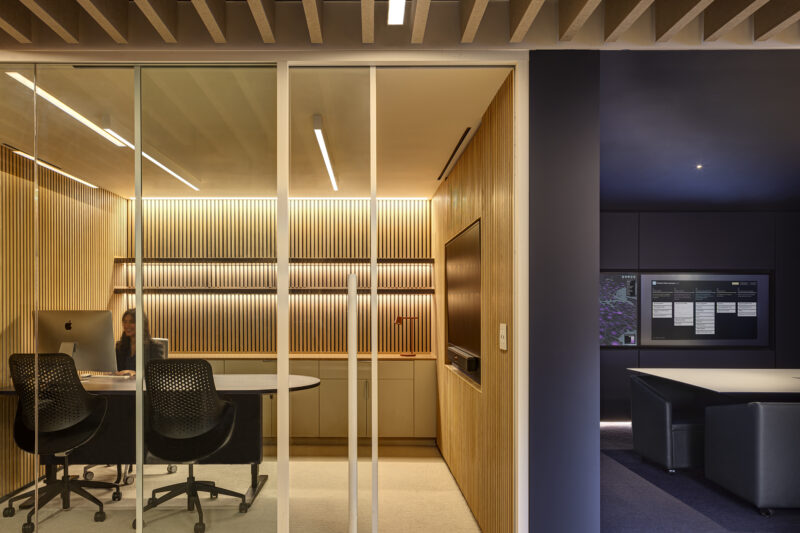
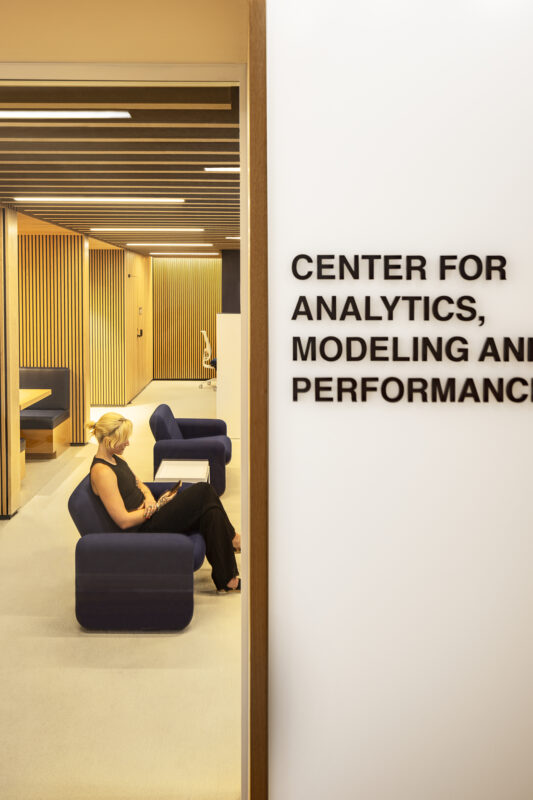
Alternating bands of felt and wood wrap every wall of the space and is the dominant visual texture, which baffles and softens conversation. This wall system is unique to the space, and along with the feeling of openness and warmth, signals to staff and guests that this is a new kind of space within the hospital. It is a space that beckons and invites inquiry, and signals the future of healthcare, much like the mission of the CAMP team itself.
